
aDutch Oven is an extremely versatile piece of cookware and can be used for a number of different cooking methods and recipes. This iconic piece of cookware has been around since the 18th century and has offered cooks a variety of different ways to prepare traditional meals or even be used as a bold serving dish when entertaining guests.
The Dutch Oven is durable and can be passed on from generation to generation. In many ways, this pot epitomizes the buy-it-for-life nature of luxury cookware and will quickly emerge as a household favorite. From making hearty stews and braising to serving as an accent piece in the kitchen when it is not being used, the Dutch Oven can do it all.
Here are nine uses for your Dutch Oven and six you might not be aware of.
Dutch Oven vs French Oven: What’s the difference?
French and Dutch Oven are often used interchangeably due to their similarities. The Dutch Oven is the original design, crafted in the 1800s. Le Creuset modernized the traditional Dutch Oven, introducing enamelled cast iron rather than pure cast iron, and the French Oven was born. It is also commonly referred to as the Cocotte.
Conventional Dutch Oven Uses
The Dutch Oven is among the most versatile pieces of cookware, accommodating many different cooking techniques and recipes. This iconic pot serves many functions and can quickly emerge as your favorite piece of cooking equipment. Here are nine conventional Dutch Oven uses.

One-Pot Stews
Few pieces of cookware are as good as preparing hearty stews than the Dutch Oven. This iconic pot is ideal for slow cooking meals, allowing all the rich ingredients to immerse themselves in the dish as it is being prepared. The Dutch Oven’s enamelled cast iron construction offers superior heat retention, maintaining a consistent temperature and cooking food evenly throughout.
Its tight-fitting lid locks in moisture and flavour, ensuring the ingredients are tender. The Dutch Oven is ideal for preparing hearty stews with its self-basting cycle doing much of the work for the cook. As the stew is being cooked, chefs have the possibility to incorporate new flavours and spices with minimum fuss.
Preparing a stew for the whole family to enjoy can take time, but with the Dutch Oven eliminates the need for constant stirring and mixing. In any case, its sand-colored enamel allows you to monitor cooking with ease as the ingredients simmer to perfection. This Beef Stew is a classic example of a delicious recipe that can be prepared in a Dutch Oven.
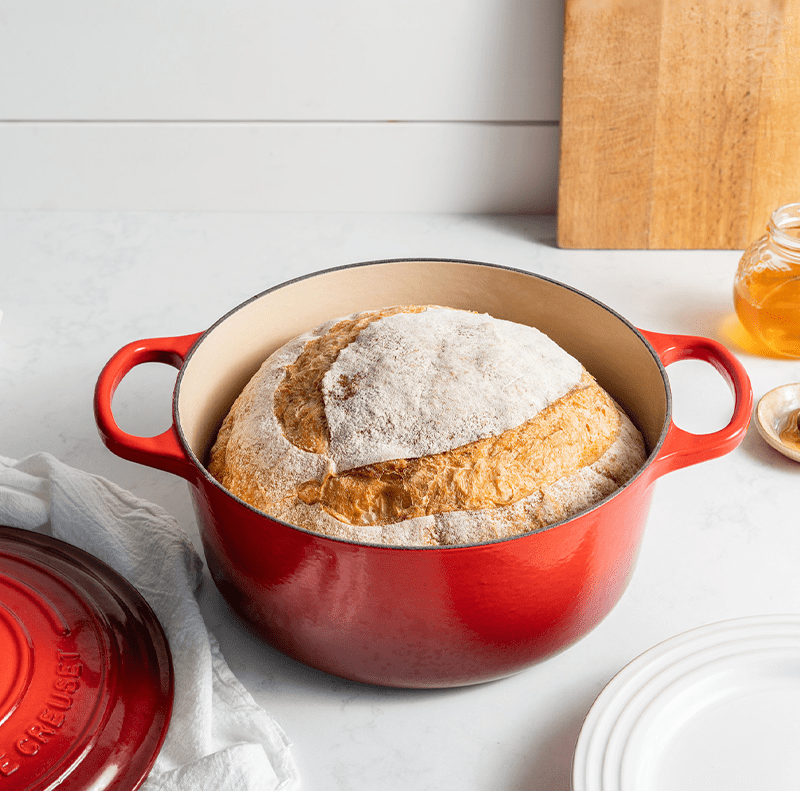
Bread-making
Bread-making has grown increasingly popular over the COVID-19 pandemic with more people staying home. Bread recipes are extremely easy to do, using four traditional ingredients: salt, water, yeast, and flour. While the Dutch Oven is synonymous with slow-cooking recipes, it has since been used to prepare delicious loaves of bread.
The Dutch Oven will ensure the bread’s crust is crispy and gets a golden colour, all-while maintaining its soft interior. The key to preparing the perfect loaf of bread is to preheat the Dutch Oven before introducing the dough.
The heat from the pot will cook the dough to perfection, keeping the crust soft for longer and allowing it to expand. The Dutch Oven’s enamelled cast iron base means the bread will not get stuck to the surface and will expose it to a consistent heat source. This No Knead Dutch Oven Bread is just one example of how this iconic piece of cookware can be used for breadmaking. Homemade bread-making has never been easier thanks to the Dutch Oven.
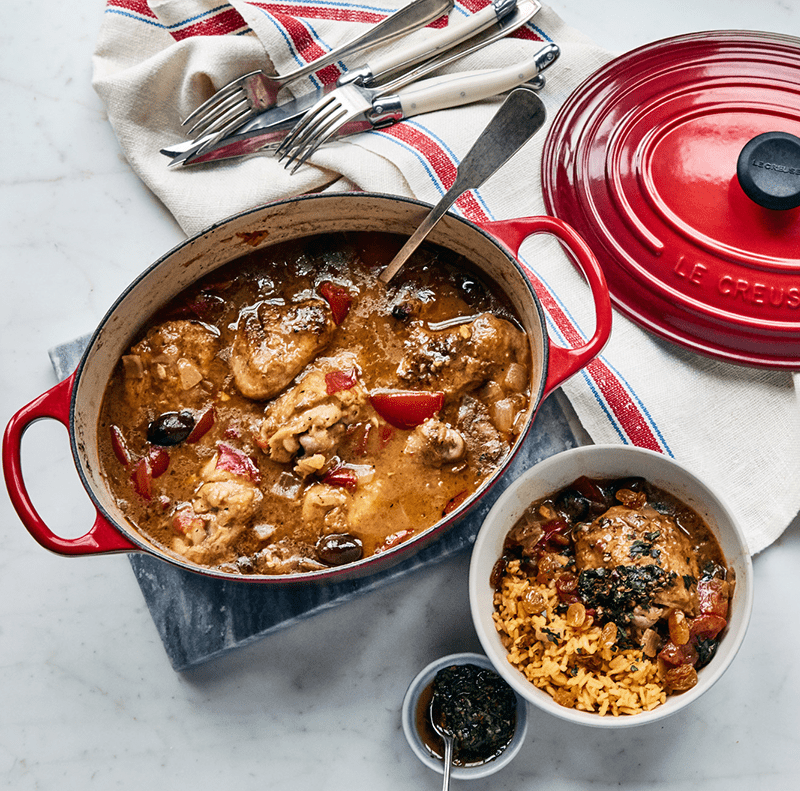
Braising
Want to get braising but don’t have a braiser? Fret not, the Dutch Oven can accommodate for many of the same braising recipes, turning tougher cuts of meat into a tender final dish. Much like the braiser, the Dutch Oven is a slow-cooking method by nature, gradually integrating all the flavours into one dish.
The first step to braising is by initially searing the meat at a medium temperature to create a browning and crisp texture. The Dutch Oven’s enamelled cast iron base is great for this step, before submerging the meat in aromatic liquid. Once the meat is in the pot, this iconic piece of cookware will largely take care of the rest, allowing you to spend quality time with loved ones as it cooks slowly.
The Dutch Oven comes in a variety of different sizes, opening up the possibility for both smaller and large braising recipes. The end product is a delicious, tender meal for the whole family and friends. This recipe is prepared in a braiser, but can easily be recreated in a Dutch Oven.

Frying
Home cooks and chefs alike are turning to their Dutch Ovens for their favourite frying recipes. This iconic piece of cookware has thick and high walls, creating the perfect environment for frying at higher temperatures. This also significantly reduces the possibility of getting burnt with the oil with the walls containing the potential splatter.
When frying it is crucial to heat up the oil as the Dutch Oven gradually reaches medium heat. Maintaining steady heat while frying is extremely important in order to achieve an even crispy texture on all ingredients. The Dutch Oven is ideal for this as it retains heat exceptionally well and will cook food evenly. In addition, this helps avoid food from becoming greasy or oily.
The Dutch Oven’s large surface offers you flexibility when frying, ensuring you can easily cook ingredients without the fear of burning them. Enamelled cast iron is extremely durable and can withstand the highest of temperatures, making the Dutch Oven a go-to when frying. This Bourbon Brined Fried Chicken is one example of a frying recipe that can be done in this pot.
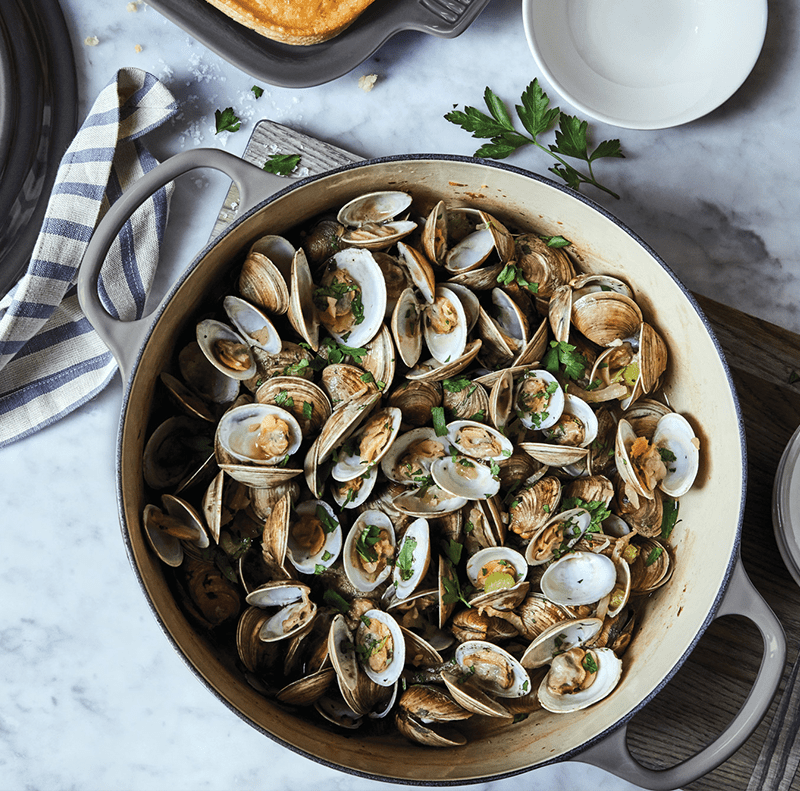
Sautéing
While sautéing has traditionally been associated with the sauté pan, this age-old technique can be done in a Dutch Oven with the minimum of fuss. Sautéing derives its name from the French verb “to jump”. As a result, for this technique to be successful you must be able to toss ingredients around easily. The Dutch Oven is great for sautéing with its larger base accommodating for many different recipes.
Much like frying, this technique relies on heating up the Dutch Oven before adding in the fat, whether it is butter or oil. The Dutch Oven’s enamelled cast iron base is crucial for this, retaining heat for longer periods of time. Sautéing, however, requires constant monitoring to avoid burning the ingredients.
The Dutch Oven’s sand-colored enamel is perfect for this, making it easy to monitor and toss as the ingredients are being sautéed. Sautéing is traditionally used for thinner cuts of meat, vegetables or fish and can even be done to enhance existing flavours by browning the surface area of the food.
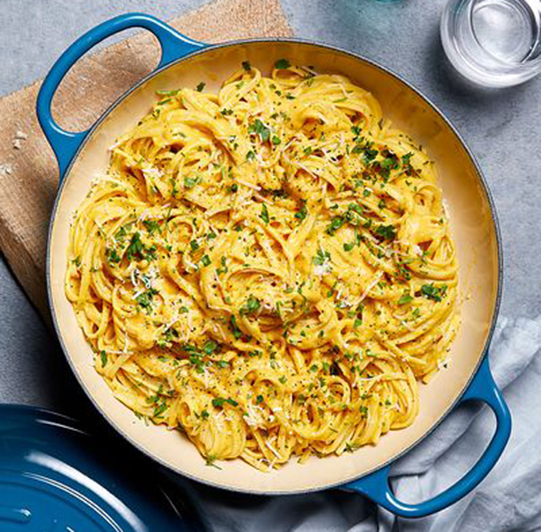
Pasta Dishes
The Dutch Oven has emerged as a staple in weeknight cooking, allowing you to prepare delicious one-pot pasta meals for friends and family in no time. This iconic piece of cookware can be used from the first step to the final step in pasta making, making it a go-to in any kitchen.
Once the pasta is boiled to your liking, the sauce can be introduced and slowly integrated into the dish. The Dutch Oven creates the ideal environment for simmering sauces to perfection due to its thick walls and tight-fitting lid. Its enamelled cast iron construction ensures sauce will not stick to the pot, simplifying cleanup well after dinner is served. For additional convenience, serve the meal directly out of the Dutch Oven.
As the sauce simmers slowly, the Dutch Oven offers you flexibility to introduce different spices and ingredients, combining rich flavours all into one pot. These are nine one-pot pasta dishes you can prepare directly from the Dutch Oven for the whole family or while entertaining guests.
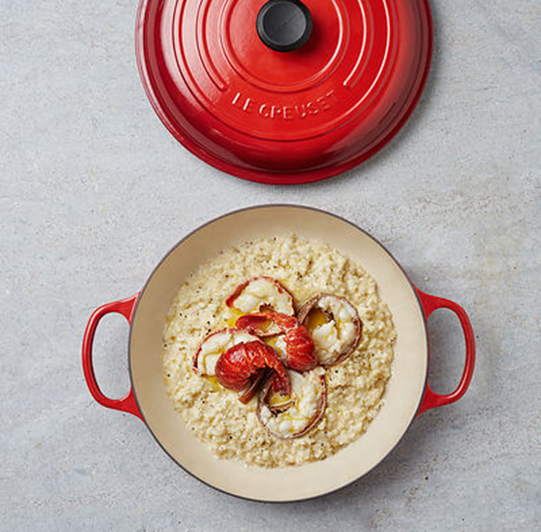
Side Dishes
Preparing a full meal when you are pressed for time or after a long day’s work can be tricky. The Dutch Oven helps in this respect and can be used to cook a number of delicious side dishes. Whether you want to steam vegetables or prepare cornbread, this piece of cookware checks off all the boxes.
The Dutch Oven epitomizes the set-it-and-forget-it nature of cooking, allowing you to spend quality time with your loved ones as ingredients cook slowly. This iconic pot is extremely versatile and can be used for a number of different cooking techniques, ranging from boiling and steaming, to searing. As a result, the Dutch Oven opens up the range of possibilities when preparing side dishes.
The Dutch Oven’s sand-colored enamel serves a crucial purpose when preparing these meals. The sand-colored enamel makes it easier to monitor the progress of cooking and avoid burning ingredients for the more delicate recipes. For more inspiration for these types of meals, visit Le Creuset’s Side Dish recipes to compliment your main course.

Making Pizza
Preparing homemade pizza is very much an art, however, the Dutch Oven has simplified this age-old recipe and has been used with more regularity. This iconic piece of cookware is great for making pizza, allowing the dough to rise to perfection, all-while achieving a crispy crust.
Once the dough has risen to your liking outside the Dutch Oven, the next step is preheating it to 450° F (233.22°C). Placing a thin layer of aluminum foil or parchment paper at the base of the Dutch Oven is recommended to make the retrieval of the pizza easier afterwards. In any case, the Dutch Oven’s enamelled cast iron base ensures it will not stick to the dough. Simply add flour at the base!
The Dutch Oven’s lid and thick walls are great for preparing homemade pizza, retaining heat exceptionally well until the dough completely rises. Using a Dutch Oven for these recipes is ideal, ensuring a delicious crust and can accommodate for pizzas of all sizes.
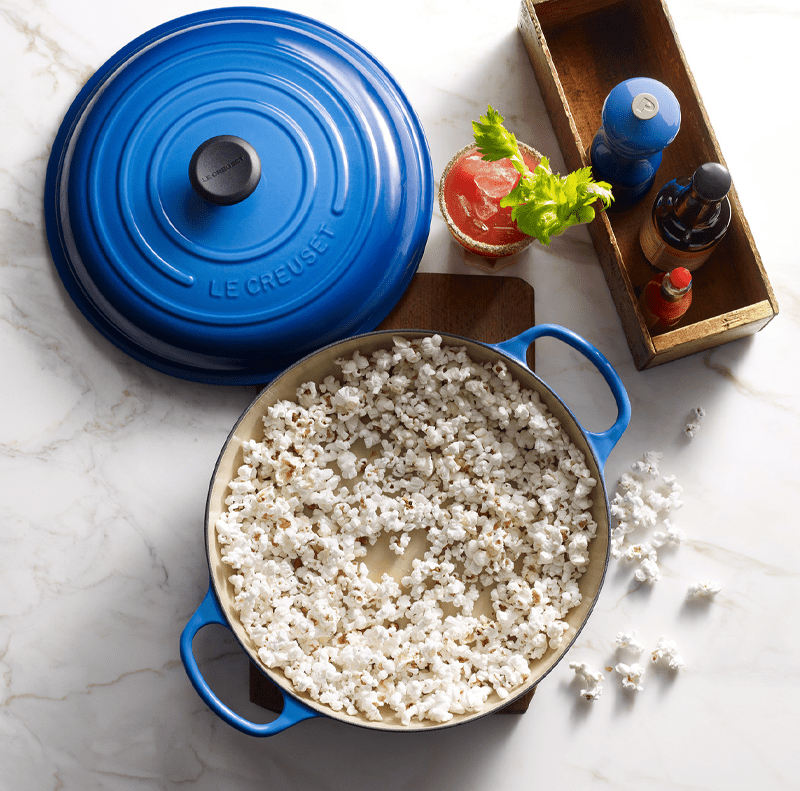
Hot-air cooking
Want to impress your loved ones on movie night with homemade popcorn? Put the microwave aside for a second and look no further than the Dutch Oven. Hot-air cooking in this iconic piece of cookware is yet another use for this pot and is perfect for preparing crunchy popcorn in no time. Quality popcorn is typically a perfect balance between being salty, buttery, and fluffy.
The Dutch Oven can deliver this delicious end product and is extremely easy to do. Start by introducing three or four kernels into the pot as a test after it reaches a medium temperature along with the oil. Once they pop, it is time to season up the freshly made popcorn with your favourite seasoning blends or simply some flaky salt and melted butter.
This Caesar Popcorn recipe was done in a braiser, but can easily be swapped out for a Dutch Oven without sacrificing convenience or flavour.
Unconventional Dutch Oven Uses
Although buying a Dutch Oven may seem like a significant purchase, you truly get your money’s worth with this iconic piece of cookware. The Dutch Oven allows you to prepare many dishes and perfect different cooking techniques all in one pot. Now that you’re aware of everything you can cook in a Dutch Oven, it’s time to look at innovative ways to make the most out of this pot. Here are six unconventional uses for the Dutch Oven that you might not be aware of.
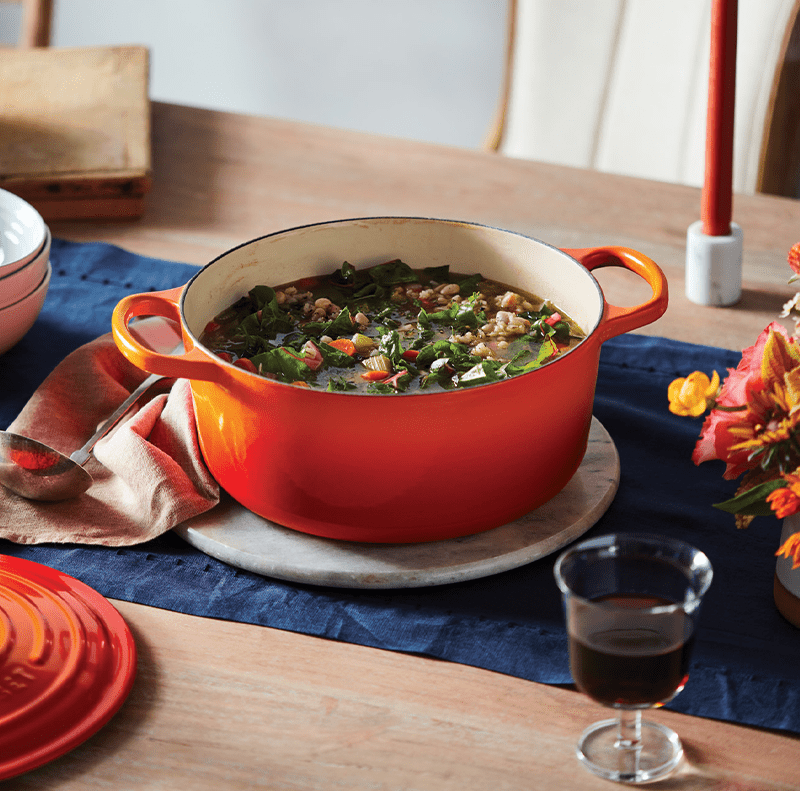
As Servingware
The Dutch Oven may have a reputation as a kitchen workhorse due to its versatility, but this iconic pot can also be used as a serving dish. This piece of cookware is offered in 11 different colours and is perfect when entertaining guests. Whether you decide to serve dinner straight out of it, or use it as a centerpiece, this iconic pot is sure to stand out and add a bold splash of colour to any dinner table. Serving directly out of the Dutch Oven also saves time on cleaning up after the meal, reducing the need for additional dishes.
In 1925, Le Creuset modernized the original Dutch Oven design, introducing the first-ever Flame-coloured enamelled cast iron cocotte. An additional 10 colours have since been added to the catalogue, including Cerise, Sage, Teal, and Blueberry among others. Today, the Dutch Oven is a staple across many kitchens.
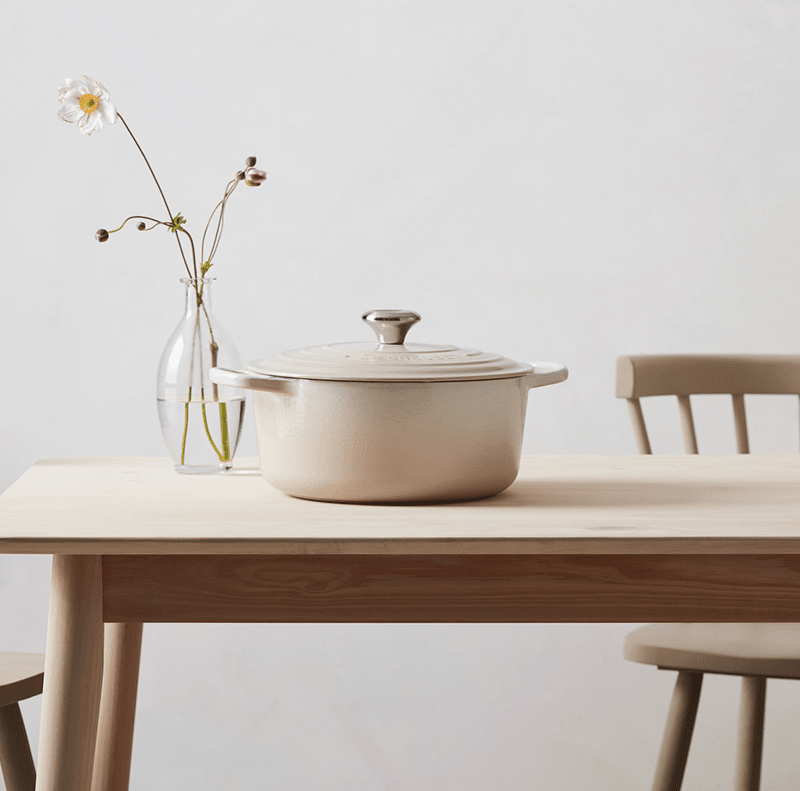
As Kitchen Decor
Staying atop interior decor trends at times can prove to be difficult. Kitchen design styles are constantly evolving, accommodating for the new flavour of the year or month. The Dutch Oven has maintained its appeal since its inception well over 200 years ago and is now being used as a contrasting interior decor piece.
When this iconic piece of cookware is not being used, it can be hung from a pot rack and serve as a unique kitchen decor atop the stovetop. Colour selection can be crucial in making this decision, with the Dutch Oven being offered in an array of vibrant and unique colours. While the Flame-coloured Dutch Oven adds some much-needed flash to your kitchen decor, the Teal-Coloured Dutch Oven is more understated. In many ways, there is a colour for every kitchen design.

As Cold Storage
The Dutch Oven retains heat exceptionally well and can be used across any cooktop, including induction. This luxury piece of cookware, however, can even be used in the refrigerator to store desserts and other colder dishes such as pasta salads. Le Creuset’s Dutch Oven can go from the stovetop to the refrigerator with ease and is capable of handling extremes on either side of the spectrum.
Its enamelled cast iron construction is crafted to withstand freezing temperatures, without the fear of thermal shock, cracking, or chipping. Before storing the Dutch Oven in the freezer, ensure it first reaches room temperature. A sudden change of temperature from hot to cold can cause the enamel to crack.
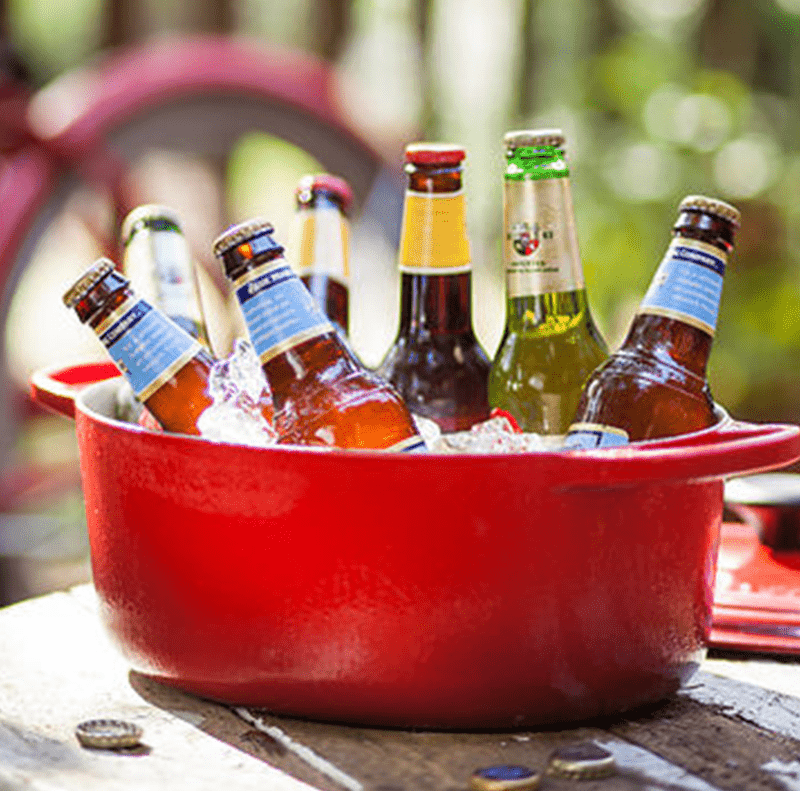
As a Cooler or Ice Bucket
Don’t have a cooler? No problem. The Dutch Oven can be used as an impromptu cooler for those warmer days, accommodating for both smaller and larger bottles and drinks. This iconic pot is offered in nine different sizes, ranging from 0.9 L to 12 L, opening up the possibilities. Whether you’re headed to the park with friends, or hosting guests in the backyard, the Dutch Oven will do the job.
Simply fill up the Dutch Oven with ice and this iconic pot will do the rest, keeping your drinks cool in warmer temperatures. Its enamelled cast iron base will sustain its temperature throughout and offer you the most unique cooler out there. Offered in 11 different colours, the Dutch Oven is the cooler you didn’t know you needed.

As a Pitcher for Beverages
Impress your guests and serve refreshing drinks straight out of your colourful Dutch Oven. This luxury piece of cookware can double as a punch bowl for delicious drinks, including Hibiscus Spice Iced Tea, and any other refreshments you might have in mind. The Dutch Oven’s shallow base ensures it can contain drinks of all sizes and is easy to mix.
Offered in a variety of sizes and colours, the Dutch Oven can easily be transformed into your pitcher when entertaining guests or on family night. While this iconic pot has earned a reputation as a kitchen workhorse, don’t be surprised to see it used as a pitcher at your next get-together. Throw in a ladle and get serving!
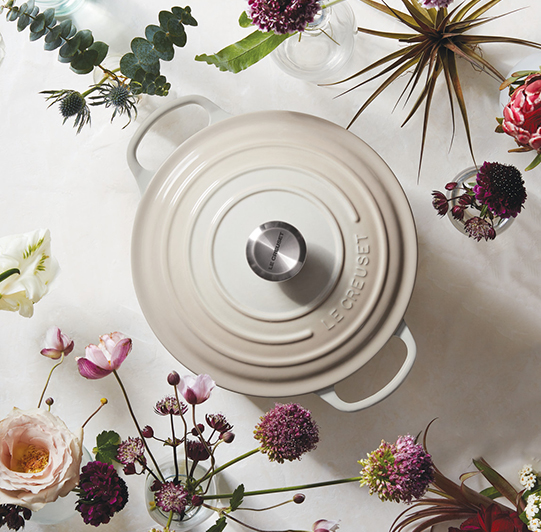
As a Flower Vase
If you’re feeling extra creative, the Dutch Oven can even be used as a vase for the freshest of flowers. This iconic piece of cookware comes in many different shapes, including round and oval, making it a convenient and colourful vase. The Dutch Oven’s high walls and large surface area are perfect for preserving flowers for weeks to come.
This pot’s ergonomic handles make it extremely easy to transport across the house and find just the right place for it. Once it’s time to replace the flowers, the Dutch Oven is easy to clean and can be used shortly thereafter. Fill up the Dutch Oven with just enough water and enjoy the view!
Putting it all together
The Dutch Oven has come a long way since its original design in 1769 and has continuously adapted to the times to remain relevant. Today, this iconic piece of cookware has emerged as a favourite across many households and is among the most commonly used pieces of cookware that exists.
The Dutch Oven is very much a jack-of-all-trades and can be used for many different cooking techniques, including braising, frying, searing, and sautéing. When it is not being used to cook, however, the Dutch Oven can serve a wide array of purposes.
This luxury pot can support kitchen design as a unique decor piece, or double as a unique cooler and pitcher. These were just 15 different uses of the Dutch Oven: nine conventional, and six unconventional. Let us know how you use your Dutch Oven!

